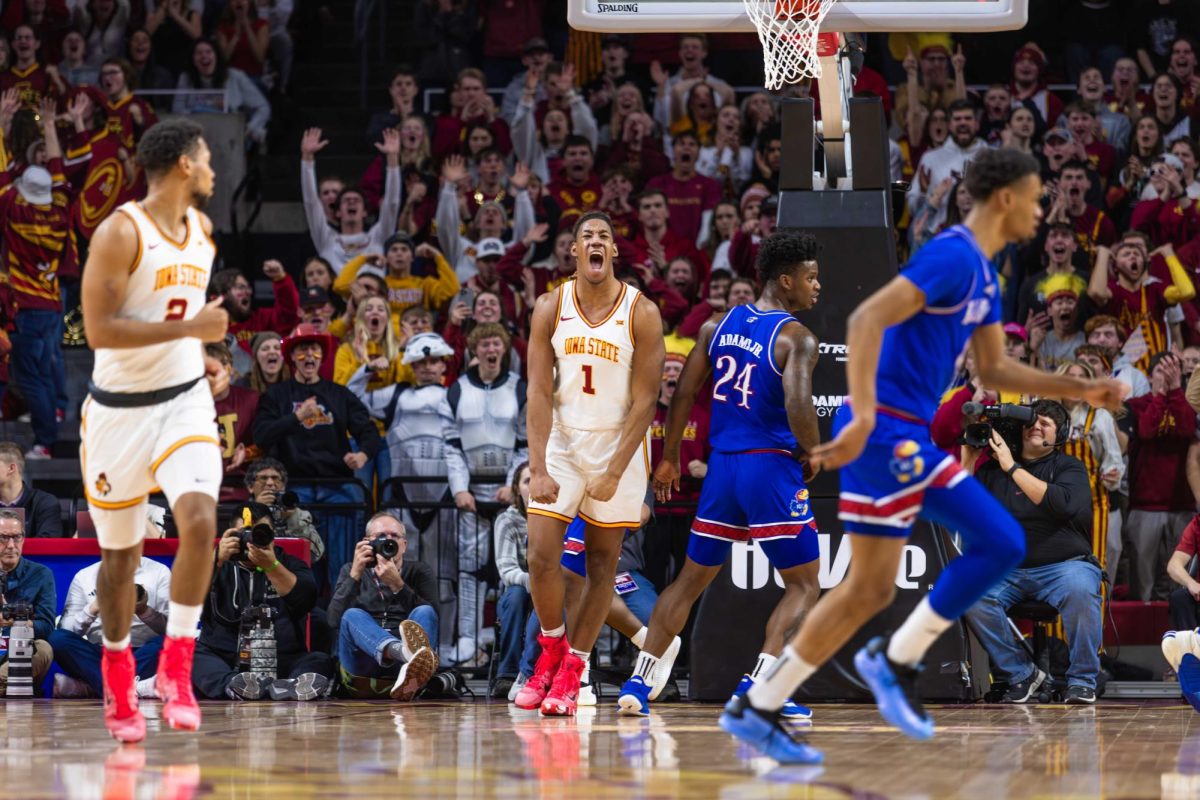Only a small pinch felt at pump as prices climb
February 27, 2003
The skyrocketing prices of gasoline are having a muted effect on local transportation.
Gas prices are nearing $2 per gallon in parts of the nation. However, Iowans have seen significantly lower prices.
The rising gas prices are connected to a possible war with Iraq, which could restrict oil shipments from there. Iraq holds the world’s second largest proven oil reserves, second only to Saudi Arabia.
Some filling stations in Ames are finding ways to reduce consumer costs.
Bill Wheelock, manager of Wheelock Sinclair, 105 E. Lincoln Way, keeps prices low by using non-Middle Eastern petroleum.
As of Wednesday, Wheelock’s mid-grade (ethanol-enriched) gasoline was $1.56 per gallon while local Kum & Go stations were charging $1.69 per gallon for the same grade of gasoline.
Wheelock said Sinclair’s refineries are in Wyoming, which means Sinclair stations escape some of the costs that come along with Middle Eastern oil. This also means Wheelock’s gas is up to 13 cents per gallon cheaper than some of his competitors.
Another company using non-Middle Eastern products is Citgo. Citgo Petroleum gets its petrol from its parent company, Petroleos de Venezuela, according to Citgo’s Web site.
Venezuelan petroleum is keeping Citgo’s prices low. On Wednesday, prices were $1.57 per gallon for mid-grade gasoline.
Another factor is Iowa tax incentives on ethanol-blended gasoline. Ethanol, a fuel additive that can be made from corn byproducts, helps support Iowa farmers, burns cleaner and shaves a few cents off prices, according to the State of Iowa Web site.
Sinclair and Citgo’s ethanol prices are 2 cents lower than standard gas, but places like Kum & Go and BP range from 3 to 5 cents lower than standard-grade gas.
Even with prices at near-record highs, Wheelock said business remains constant.
“People might complain about the prices, but they keep driving,” he said.
All but two of CyRide’s vehicles use diesel fuel, but the system is still feeling the effects of gas rate increases, said Bob Bourne, director of CyRide.
“Fuel costs are up 25 percent since last October,” he said. “A bus usually uses about two and a half gallons [of fuel] per hour… so costs are up about 60 cents an hour.”
Bourne said ridership has increased as much as 35 percent but cannot be directly attributed to the rise in gasoline prices. Other factors increasing ridership include making all routes free for students and winter weather, he said.
An overall effect is yet to be seen, Bourne said. CyRide ran under budget during fall semester and, therefore, had a surplus of funds coming into the spring semester, he said.
This gave CyRide a cushion for going over budget on fuel in the spring.
The cushion may not last if prices continue to rise, Bourne said.
“We haven’t seen a budgetary impact yet,” he said.
— CNN contributed to this story.






